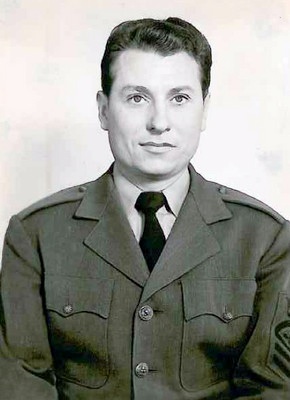 Truk Island Strike (by Walter J Drew)
Truk Island Strike (by Walter J Drew)
The following is a story about World War II, written by my grandfather before his Alzheimer’s had advanced.
TRUK ISLAND STRIKE
February 16 – 17, 1944
By Walter J. (Deptula) Drew
Essex arrived at Majuro Lagoon on 5 February 1944 in preparation for Air Group Nine’s strike on the Truk Island group in the Caroline Islands. The group was made up of about a dozen small islands in a lagoon surrounded by a coral reef, about 40 miles across at its longest point. Truk was a major Japanese Naval and air base. The fast Carrier Task Force 58 would form up on 12 February at sea, refuel on the 14th, and head for Truk. It consisted of three task groups: TG58 — with the carriers Enterprise (CV-6) and Yorktown (CV-10) and light carrier Belleau Wood (CVL-24), TG58.2 — with the carriers Essex (CV-9), Intrepid (CV-11) an light carrier Cabot (CVL-28), TG58.3 — with the carrier Bunker Hill (CV-17) and the light carriers Monterey (CVL-26) and Cowpens (CVL-25), plus five CV’s and four CVL’s. Together, they could launch over 600 planes. They were accompanied by six battleships, ten cruisers (heavy and light and anti-aircraft types), 29 Destroyers plus submarines. Task Force 58 had enormous strike power. The nine carriers were under Rear Admiral Marc Mitscher as the task force commander, all in the fifth fleet commanded by VADM Raymond A. Spruance.
During the strike on Truk, Torpedo Squadron Nine lost LTJG Donald Kane, Dick Hamill, and Charles Chalman. Their plane was last observed diving on an ammunition ship, which had previously been hit by a dive-bomber, and it was thought that they were caught in the explosion of the ship.
During the strike on Truk, VF-9’s LTJG George Blair of Sewickley, PA was shot down in the Truk lagoon. A flight of VF-9 Hellcats led by Lt. Jack S. Kitchen of Glasgow, MO prevented Blair’s capture by repeatedly strafing a boat that was attempting to get to Blair. After repeated strafing attacks, the boat finally exploded and sank. This was happening while the fighters were awaiting an OS2U (Kingfisher) from one of the cruisers to arrive. I was in the air when the Kingfisher arrived and when the pilot saw where he had to land to rescue Blair, I heard the following exchange between the pilot and Kitchen — Kingfisher pilot: “I’m not going down there”. Lt. Kitchen: “You’d better go down there or I’ll shoot yo’ ass down”. Needless to say, Blair was rescued.
After my flight, I was in the ready room and noticed that Albert S. Moore was very troubled. I thought I would try to console him be telling him that all air opposition had virtually been eliminated. This was shortly before he was called to man his plane along with LTJG Charles C. Hoover of Foley, AL and John J. Gamel of Kennett MO. Albert was from Fall River, MA. Upon taking off from Essex, LTJG Hoover veered to the port side and, because he lacked flying speed, his left landing gear went in the catwalk causing him to cartwheel and land upside down on the water. There were no survivors.
Pilot LTJG Richard B. Zentmeyer; Radioman Herbert C. (Andy) Anderson; and I, Turret Gunner Walter J. Deptula had two flights — one on 16 February and one on 17 February 1944.
At least 275 Japanese planes were shot down. Tonnage sunk was about 200,000. Of the entire task force, 17 planes were shot down with the loss of 29 airmen. Essex launched 260 sorties against Truk targets (plus additional cap sorties). Her pilots were credited with 36 kills, two probables in the air, and at least 37 more on the ground. Ninety tons of bombs were delivered resulting in five ships sunk and 28 severely damaged. Post-war interrogations would reveal that the Japanese captured seven downed American airmen of these strikes and executed all of them.
